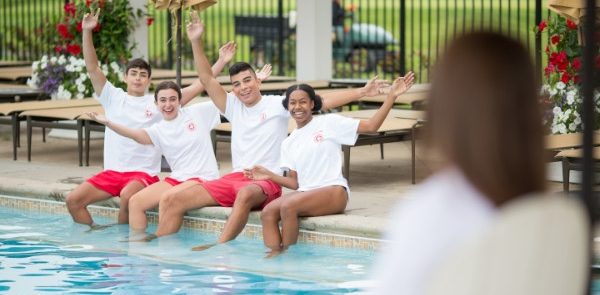Lifeguard recertification is necessary to continue your job as a lifeguard. Becoming certified as a lifeguard requires the completion of 20 hours of instruction at a local pool or aquatic facility. You must pass a written exam and demonstrate your knowledge of swimming safety skills, CPR, first aid, water rescue, and lifeguarding.
You may be able to complete your coursework in a pool or aquatic facility, but it’s highly recommended that you take your classes at a local aquatic centre. Aquatic centres are often more comfortable than pools, have a higher degree of supervision, and provide the best environment for learning.
The first step is to contact a local aquatic centre to find out what classes are offered. Some centres offer classes on-site, while others require that you take your courses off-site. If the aquatic centre is open during the summer, it’s best to sign up for classes in the morning because you’ll be able to use the facilities for free during your lunch break.
Lifeguard Recertification Is Important
Lifeguard recertification is important for refreshing and updating your lifeguarding skills and knowledge. If you are planning to re-certify as a lifeguard, you will need to take the state’s training course. There are several options on offer to recertify, including online courses that are self-paced, live, and interactive classes that are conducted at various locations throughout Florida. You can recertify in person, through an approved online provider, or by taking the course online. The American Lifeguard Association has a list of online offer recertification courses for lifeguards.
Lifeguard Recertification Requirements
The American Lifeguard Association (ALA) offers the following lifeguard recertification requirements:
A minimum of 6 hours of continuing education for every 2 years you have been a lifeguard. All ALA lifeguards are required to renew their lifeguard certification annually. Lifeguard recertification must be completed after two years of completion of your lifeguard training. The American Lifeguard Association offers a variety of classes that you can take to maintain your lifeguarding skills and knowledge.
Classes include:
- CPR (Cardiopulmonary Resuscitation)
- First Aid
- Water Safety
- CPR/AED
CPR (Cardiopulmonary Resuscitation)
CPR (cardiopulmonary resuscitation) is an emergency procedure to keep someone who has stopped breathing alive until medical help can arrive. CPR involves using hands and mouth to deliver a series of blows to the chest.
This will stimulate the heart and lungs and may prevent further damage to the heart and brain. CPR for adults When you are trained in lifeguarding, your instructor will show you how to do CPR on an adult. The following steps outline what you should do when faced with an adult who is not breathing:
First Aid
First Aid, also known as first-aid training, is the ability to provide basic medical assistance and treatment to someone who is injured or has an illness. In addition to this, it includes skills to deal with a variety of situations such as how to control bleeding, how to resuscitate someone who has had an accident, and even how to perform CPR.
Water Safety
Water safety is a key component of every lifeguarding course. It is an important part of the curriculum and should be taught in detail during training, as it is a vital component in helping you to become a competent lifeguard. Water safety is a lifeguard’s primary job function. It is also one of the most common causes of drowning. Water safety is about keeping yourself safe from the water while in the water.

CPR/AED
CPR/AED courses are taught by certified instructors. If you complete an accredited lifeguard recertification course, the instructor will certify that you have successfully completed the course. To receive certification, you must complete a final exam and file a certificate of completion with the instructor. You may also be required to provide documentation of the course completion.
Recreational Lifeguard Training
Lifeguard recertification means that you refresh a number of skills that are helpful in lifeguarding and are required to be renewed every three years. The first step is to become a member of the American Lifeguard Association, which requires that you pass the certification exam. The test has four sections:
Final Words
To qualify as a lifeguard you must score a passing grade on each section. The American Lifeguard Association provides you with the lifeguard recertification course throughout the year. If you looking for your lifeguard recertification then please do not hesitate to contact us.

